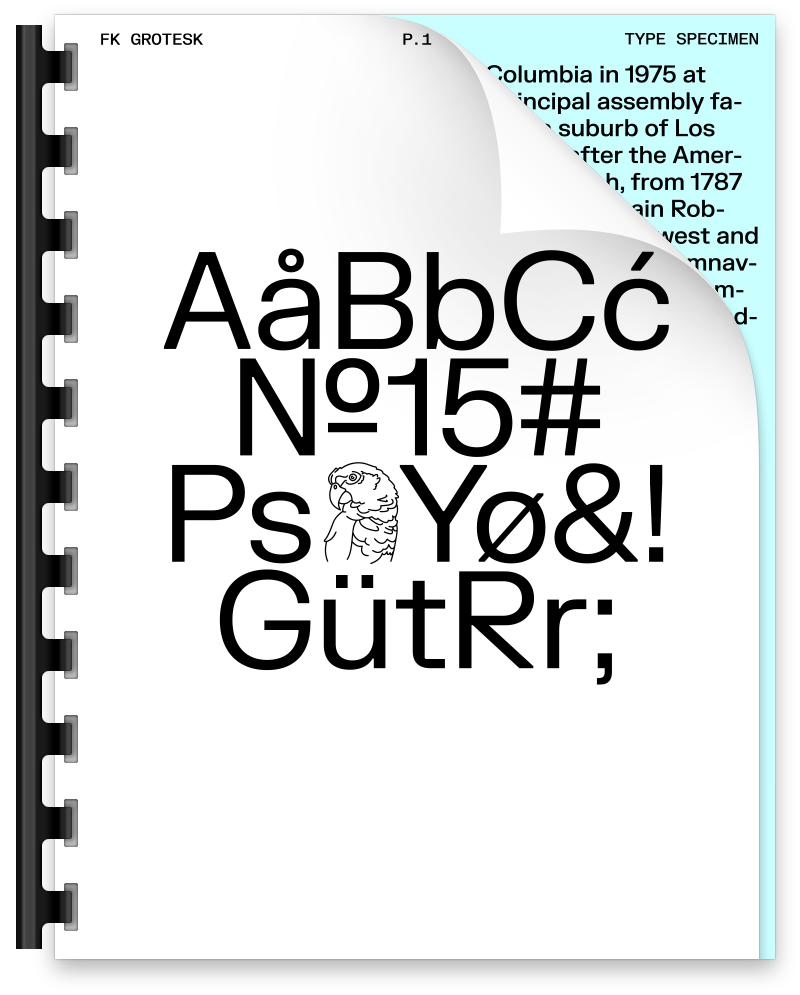FK Grotesk represents a rigid typeface with a mechanical appearance, suitable for both small text and large headlines. Subtle ink traps and sharp corners provide distinctive and eye-catching detail at large point sizes.
The first version of FK Grotesk dates back to 2014. The typeface was persistently tested in various projects since then, and in 2018 eventually released as a first-ever FK typeface. Completely redrawn in 2021, it now ranges from thin to black weight and corresponding italic, semi-mono and mono styles (also available as a three-axis variable font).
FK Grotesk supports Latin Extended-A character set (i.e. Western European, Central European and Southeastern European languages) as well as Vietnamese language and several OpenType features. For complete specs see typeface specimen.
FK Grotesk 2.0 is still available upon request. Please, get in touch.
- Designer
Květoslav Bartoš
- Publisher
Florian Karsten Typefaces
- Release date
January 2018
- Version
3.2.4 (April 2022)
- Formats
Static (OTF, TTF, WOFF, WOFF2), Variable (TTF, WOFF, WOFF2)
- Glyphs
972
- OpenType features
Standard Ligatures, Case Sensitive Forms, Fractions, Numerators, Denominators, Scientific Inferiors, Superscript, Subscript, Oldstyle Figures, Lining Figures, Proportional Figures, Tabular Figures, Slashed Zero, Stylistic Sets (SS01–SS08)
- Language support
Afrikaans, Albanian, Asturian, Azerbaijani, Basque, Bemba, Bosnian, Breton, Catalan, Cornish, Croatian, Czech, Danish, Dutch, English, Esperanto, Estonian, Faroese, Fijian, Filipino, Finnish, French, Frisian, Friulian, Galician, Ganda, German, Hungarian, Icelandic, Indonesian, Irish, Italian, Kinyarwanda, Klingon, Latvian, Lithuanian, Luxembourgish, Makhuwa, Maltese, Norwegian, Polish, Portuguese, Romanian, Romansh, Sango, Scottish Gaelic, Serbian, Shona, Slovak, Slovenian, Somali, Spanish, Swahili, Swedish, Swiss German, Turkish, Uzbek, Vietnamese, Welsh, Zarma, Zulu
- Licensing
A basic license purchased via this website combines desktop and web license and covers installation on a given number of workstations within one organisation and allows you to self-host webfont files for a single domain with no time limitation for a given number of unique visitors per month. For more information about other licensing options, please check FAQ or get in touch.




